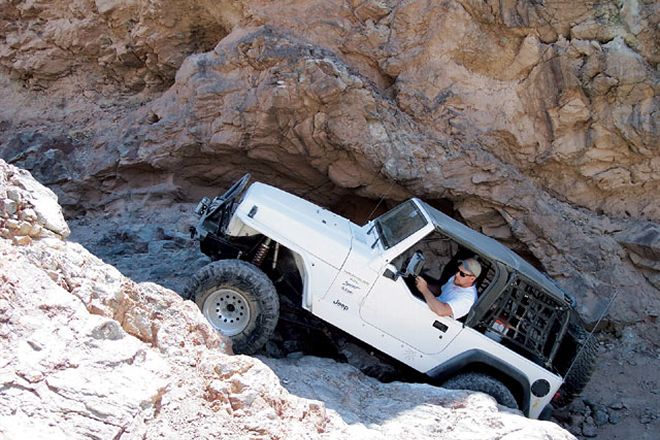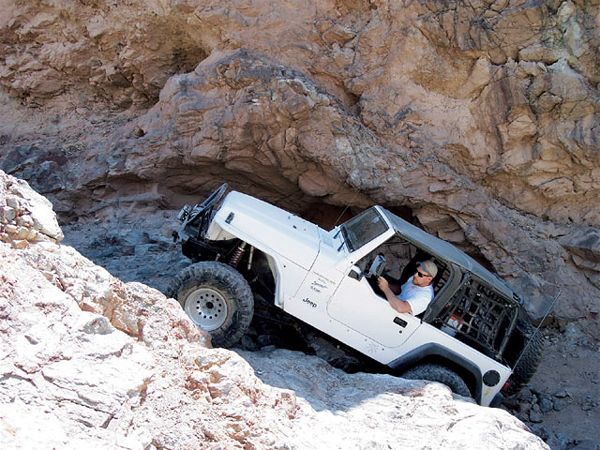
 Christian Hazel
Brand Manager, Four Wheeler
Photographers:
Courtesy Of TAG Motorsports
Christian Hazel
Brand Manager, Four Wheeler
Photographers:
Courtesy Of TAG Motorsports

Coilovers have several advantages over the standard coil and shock setups. With coilovers, more than one rate of coil can be stacked on top of another for an easy progressive coil rate, virtually all coilover shocks feature a threaded body for easy height adjustment, most coilover shocks are a high-performance design for cooler running and more control at speeds, and a coilover's compact packaging makes a clean, tight installation a no-brainer. This isn't always so with regular coils.
When TAG Motorsports foreman Jay Miller decided to upgrade the front of his '97 TJ, we put our heads together and scoured the market for those components we felt offered the best blend of performance, ease of install, and price. Here's what we came up with.
Before-and-After Impressions
On the trail, Miller reported a much-improved feeling of stability. Before, under full droop, the factory-type coil would unseat from its mount, leaving about 3-4 inches of dead, unsprung travel. As the Jeep came down an obstacle, the lack of suspension would allow the Jeep to gain momentum until the vehicle weight came back to rest on the coil. The coilovers don't unseat, so the body has no opportunity to gain momentum when climbing down obstacles because the vehicle's weight is always supported by the springs.
Miller also says the most drastic changes were noted over high-speed blasts down fire roads and extremely rough sections of trail. The high-performance Walker Evans Racing shocks really come into their own here, allowing a smooth and controlled ride over terrain that before would prove to be a few steps above punishing. The steering reacts more quickly and the tires are able to adhere to the contours of the trail way better. Miller runs all four adjustable shocks five clicks up from the softest setting, but with 16 adjustment positions, there's a setting for everybody.
Duplicate It With . . .
Here are the parts and tools we used:
* PN CE-9602: Rock Jock (Currie Enterprises) coilover mounts
* PN ERS-1000-250-400: Eibach Spring coils
* PN ERS-1000-250-225: Eibach Spring coils
* PN 500-16-008: Walker Evans Racing rear shocks
* PN WER-700-16-010: Walker Evans Racing front coilover shocks
* Welder
* 3/4-inch wrenches
* Grinder
* Saber saw




